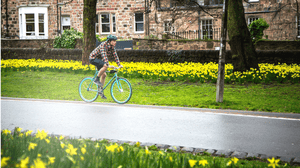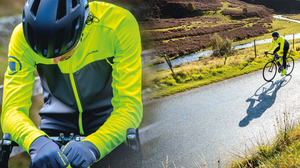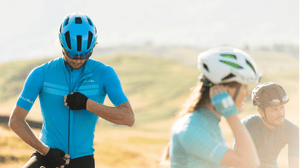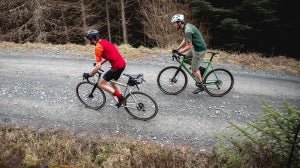

Deep winter tips on planning an adventure ride
Winter isn’t coming, winter is here. Deep winter is one of our favourite times of year for getting out here in Scotland – a ride on a sunny day in the middle of summer is great, but does it beat a day under a bluebird sky on frosty trails, getting back just as the light disappears with the feeling that you’ve squeezed everything you could from an all-too-short day? Agreed?
As subject matter experts in the foul weather riding gear, our off-road ranges have always had you covered for cold / wet / windy conditions and we’ve recently beefed up our MT500 Freezing Point collection for cold / snowy / windy days. The MT500 and SingleTrack collections have mountain bikers covered for waterproof jackets and riding trousers and the ultimate combo - the Waterproof Onesies too. And gravel riders can reach for GV500 for pared down winter clothing for faster paced, longer distance riding.
So, we have you covered right apparel, but are you really ready for winter riding. We’re big fans of Mountaineering Scotland’s ThinkWINTER1 checklist:
What will the weather and conditions be like? Plan your route and check the mountain weather and in some environments, it make sense to look at the avalanche forecasts too.
Have you got the right clothing and equipment for winter? Be prepared for snow, ice and very cold temperatures – wear appropriate winter clothing and pack more, alongside more food than you’d normally carry.
Is your intended route suitable for your experience and fitness level, and that of anyone you're going with? This isn’t the time to be pushing out experimental routes in big hills unless you have the skills and experience to do it safely.
Do you have a number of options or are you set on one route or plan? If you’re heading out far then be prepared to alter your plans if the weather or conditions change and always work out your shortcuts before you go.
Have you told someone else where you are going? Let someone know where you are going, what you intend to do and what time you will be back.
Do you know when and how to call for help? In the UK, phone 999 or 112 and ask for Police and Mountain Rescue.
Mountain Rescue teams are all volunteers and it’s going to take a while for them to get to base, pick up kit and get to where you are. They’re moving, but you’re not, for a couple of hours and maybe more, so you might want to think about carrying some extra gear, just in case. Keeping a casualty warm – whether that’s you or someone else – can make all the difference.
Group shelter / bothy bag – an absolute godsend in bad weather when you’re stopped for any length of time. A tent without poles basically. Easy to deploy and quick to pack away they’re pretty good if you want to take a lunch break in an exposed spot too.
Emergency warm gear – a dry bag packed with a cheap lightweight puffer jacket in the largest size available, with a pair of fleece gloves and an old drawstring fleece multitube / hat in the pockets. Homemade survival blanket - one of those big plastic bags with a foil blanket taped inside – once you’ve dressed the casualty in the emergency warm gear, wrap them up like a burrito and get into that shelter to await help.
Drop by your local Endura dealer or head to endurasport.com to see more of our winter wonders and make sure you send some money towards your local mountain rescue team too.
Cold Weather Kit

Related Articles







